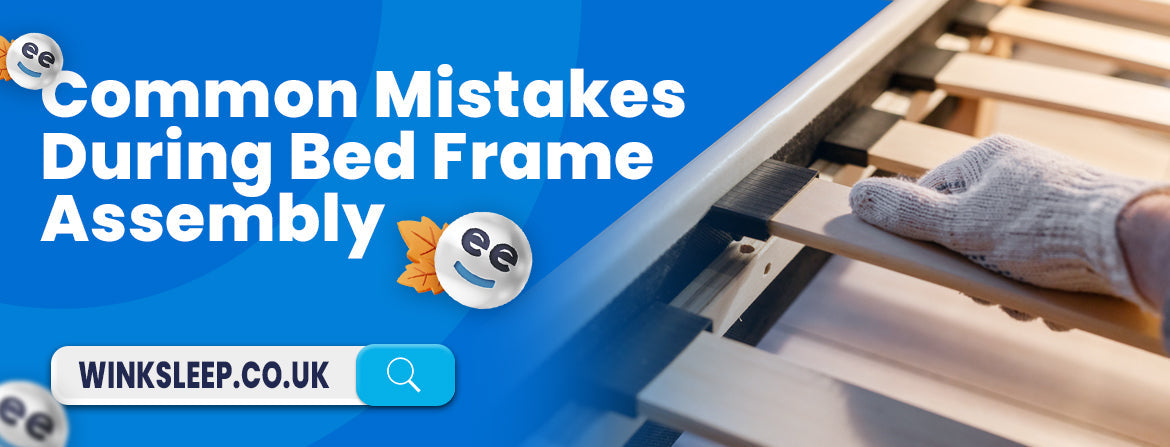An ottoman bed is a great space-saver. The mattress lifts, uncovering a hidden space underneath that's great for storing things like extra blankets or clothes. But it can sometimes be a little tricky to close.
Is your ottoman bed difficult to close, or does it refuse to stay down? Perhaps it's making strange noises. You might be worried about breaking something if you push too hard, or you may not know how to lower the mattress safely.
So, let’s show you the simple, stress-free way to close your ottoman bed every time. You'll also learn how to fix common problems and keep your bed in great shape for years.
What Is Your Ottoman Bed Mechanism?
Before you can close your ottoman bed properly, it's helpful to understand how it works. Don't worry - you don't need to be an engineer to understand this!
Types of Lifting Systems
Your ottoman bed uses one of three main systems to help lift the heavy mattress:
Gas Struts - These look like thick metal tubes. They're filled with gas that pushes back when you press on them. Most new ottoman beds use these because they make lifting very easy.
Spring Mechanisms - These use metal springs to help lift the bed. They're less common now but still work well. The springs extend when the bed opens and retract when you close it.
Hydraulic Systems - These work like car brakes, using liquid pressure. They're smooth and quiet but more expensive. You don't often see these in home furniture.
Main Parts of Ottoman Bed
- The Base: The bottom part that stays on the floor.
- The Lifting Frame: The part that moves up and down.
- Hinges: These connect the base to the lifting frame, just like door hinges.
- The Struts or Springs: These are the parts that do the heavy lifting.
-
Safety Catches: These prevent the bed from closing unexpectedly.
Step-by-Step Closing Instructions
Want to close your ottoman bed? Here are the easy steps to follow. Go slowly at first, and you'll be a pro in no time.
Clear Everything First
Before you close the bed, be sure to clear everything off the mattress. Take off all pillows and blankets. Also, check the storage space to make sure no clothes or other items are sticking out, as they could get caught and damaged.
Get in the Right Spot
Stand at the end of your bed with your feet spread apart. This wide stance will help you stay balanced and stable while you move the heavy mattress.
Find the Right Grip
Put your hands on both sides of the bed frame, not on the mattress itself. The mattress can shift around, but the frame gives you solid control. Keep your fingers away from any hinges or moving parts where they could get pinched.
Start the Closing Process
Gently push the bed frame down. Don't force it; the gas struts or springs should lower it smoothly. If it feels stuck or heavy, stop and see what's in the way.
Guide It Down Slowly
As the bed comes down, use your hands to guide it gently. Don't let it drop. The built-in safety features will slow it down, but you should still guide it to the floor to prevent damage.
Make Sure It's Fully Closed
Once you've lowered the bed, press down on the mattress to make sure it's sitting correctly on the frame. It should feel stable and not move. If the bed keeps rising, check that nothing is stopping it from closing completely.
How To Solve Common Closing Problems?
If your ottoman bed isn't closing properly, don't worry. Most issues are simple to fix. Let’s have a look:
Bed Won't Stay Closed
Something might be in the way, or the storage space underneath is too full, pushing the bed back open.
Mechanism Feels Stiff or Hard to Close
The moving parts likely need to be cleaned, or the gas struts might be getting old and need to be replaced.
Bed Closes Unevenly or Tilts to One Side
This often occurs when one gas strut is weaker than the other or when the items stored underneath are heavier on one side.
Strange Noises During Closing
Squeaking or grinding sounds typically indicate that the hinges need oil or that dirt is caught in the moving parts.
Bed Won't Close at All
First, check for any large items blocking it. Also, see if the mattress has moved or if a safety catch is stuck open.
Maintenance Tips for Smooth Operation
It’s simple to keep your ottoman bed in good shape. Regular care will help it work smoothly for years and prevent many common problems.
Clean and Lubricate
Every few months, wipe down the hinges and gas struts with a damp cloth. Put a few drops of household oil on the hinges to keep them working smoothly.
Check for Loose Screws
Twice a year, check all the screws on the bed and tighten any that are loose. This will keep the bed stable and prevent damage over time.
Change Gas Struts
If your bed feels heavy to lift or slams shut, the gas struts need to be replaced. They usually last about 5 to 7 years.
Store Items Properly
Instead of cramming everything into one spot, spread out your heavy items. This keeps the bed balanced and protects the lifting mechanism from damage.
Clean the Base Regularly
Vacuum around the base of your bed every few weeks to keep it clean. This stops dust and dirt from getting into the moving parts and keeps your bed free from being mouldy.
Check for Wear
Every few months, quickly check all the parts for any signs of damage, like cracks or bent pieces. If you catch these issues early, it can save you from bigger repairs later.
You may also like to read: Ottoman Beds UK: Things to consider before making a purchase
Wrapping Up
Once you know the proper steps, closing your ottoman bed is a simple process. First, remove everything from the top. Then, get in the correct position and let the bed's mechanism do most of the work. You just need to guide it down gently. If you have any problems, check for things blocking the way and consider some basic cleaning. By following these tips, your ottoman bed will work well for years.
 Build Your Bed
Build Your Bed
 Request FREE Swatches
Request FREE Swatches
 Fast Delivery on Every Product
Fast Delivery on Every Product  Klarna 0% Finance
Klarna 0% Finance  5 Year Manufacturer's Guarantee
5 Year Manufacturer's Guarantee 










